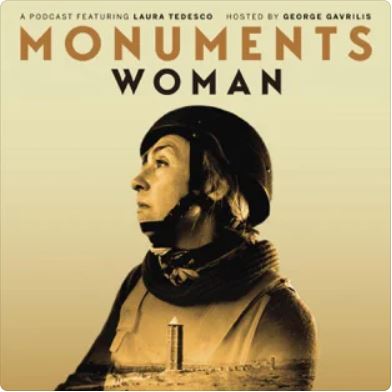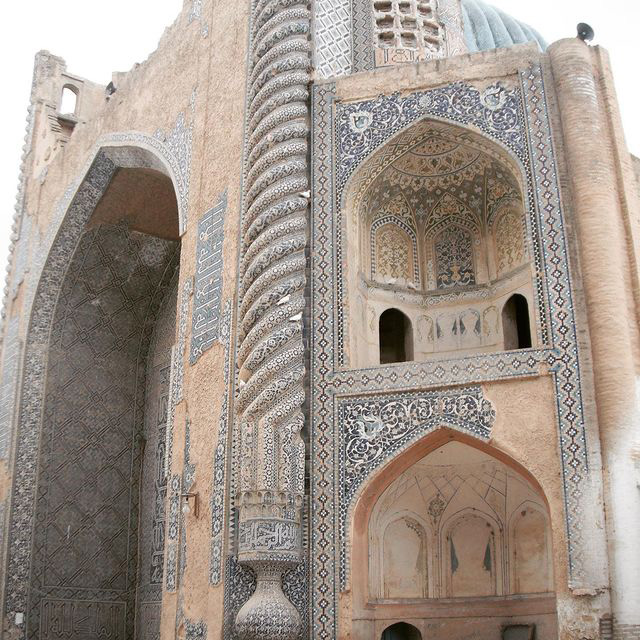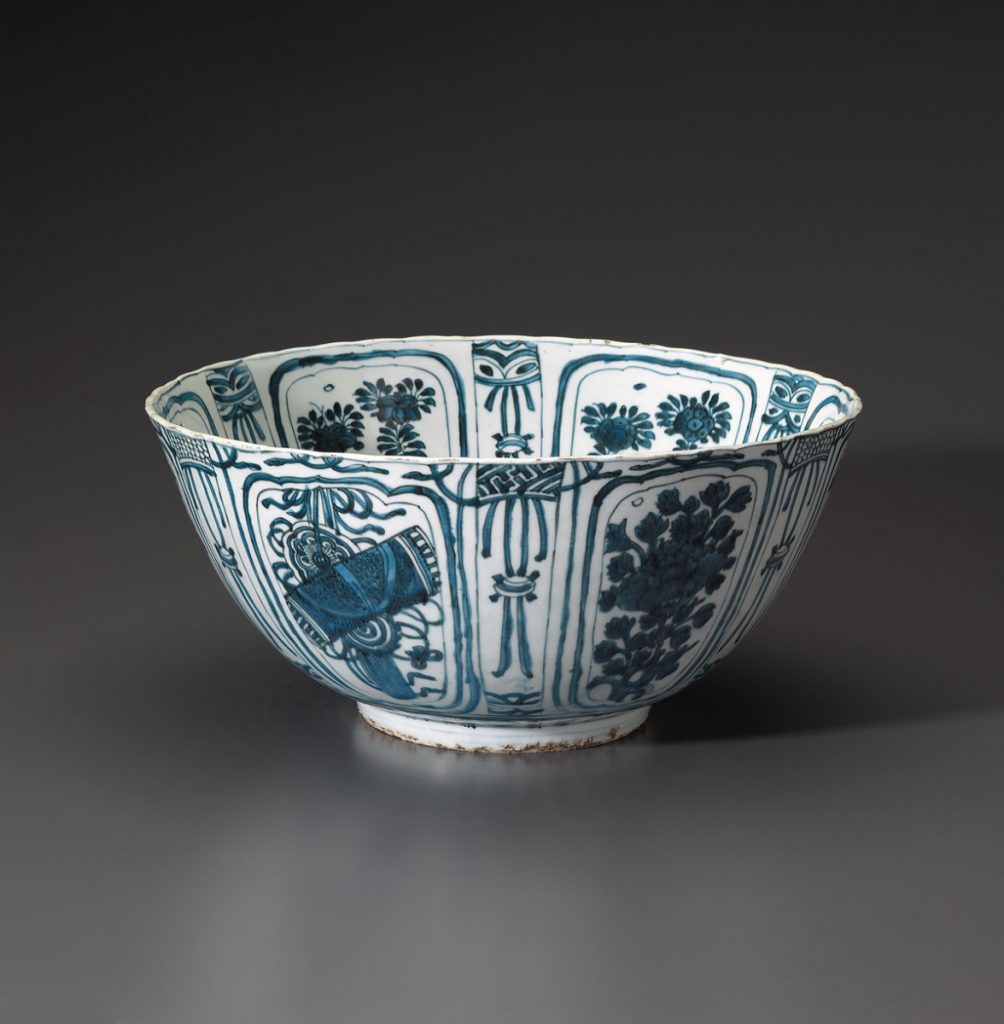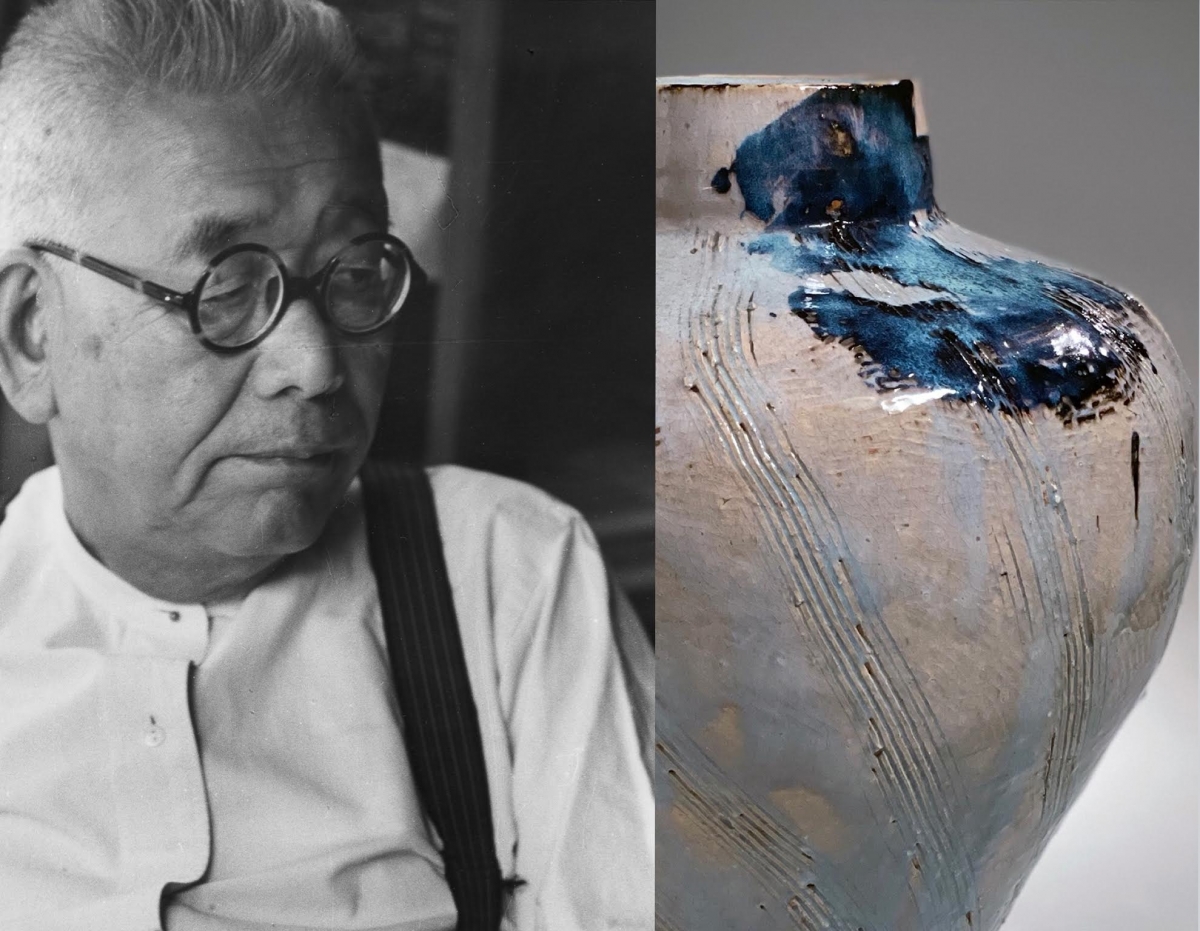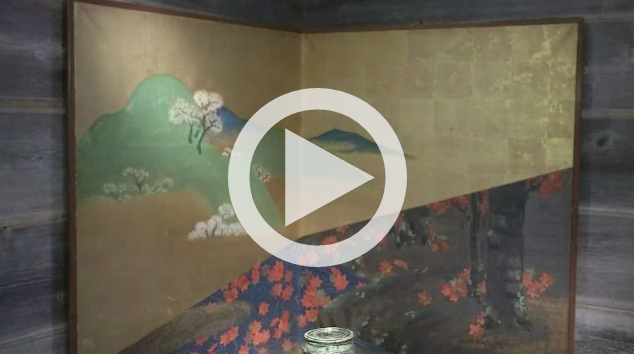An Unusually Large Kraak Bowl, Late Ming dynasty, Late 16th-early 17th century, Diameter: 36.5 cm. (14 3/8 in.), Height: 17.0 cm. (6 3/4 in.), Courtesy of Kaikodo LLC
Asia Week New York is pleased to announce that Shades of Blue, a Summer 2021 online exhibition which includes one work of art from each of the two-dozen plus galleries and 6 auction houses–Bonhams, Christie’s, Doyle, Heritage, iGavel and Sotheby’s. The online show opens on July 15th and will run through August 15th.
“We are delighted to present our summer exhibition, Shades of Blue, which explores the many ways blue has transformed Asian art,” says Dessa Goddard, Chairman of Asia Week New York.
First produced by the Egyptians 6,000 years ago, the discovery of blue pigment, in the form of cobalt blue and indigo dyes, led to the creation of many now classic styles of decoration in Asian art. For example, blue and white porcelain became a major style of decoration from Safavid Persia to the Yuan, Ming and Qing dynasties of China and later throughout Asia, including Vietnam, Japan and Korea. Much admired throughout the world, it was also imitated in Europe.
In the early 19th century with the introduction of Prussian blue, a genre of Japanese prints, known as aizuri-e exclusively used blue, while indigo dyes were extensively used in many Asian textiles, notably in the rustic textiles of rural Japan and the tribal textiles of Southeast Asia and China.
As of press time, the following galleries are presenting works in Shades of Blue:
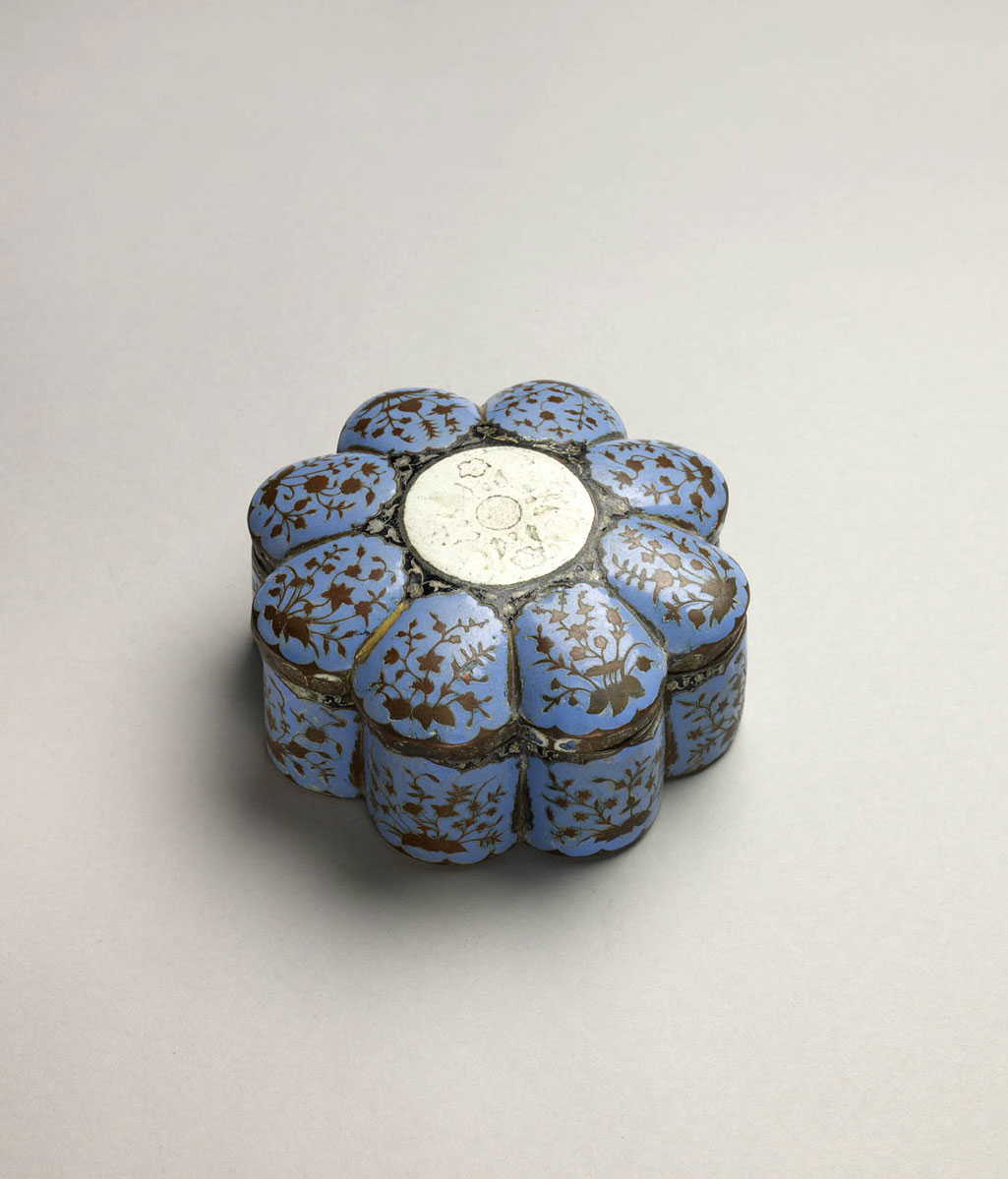
An Important Enamelled Pandan, Mughal, Akbar period, possibly from Multan in the Punjab, c.1570-1600, Gilt copper and champlevé enamel, 7 cm high ; 14.5 cm diameter (max), courtesy of Francesca Galloway
Ancient and/or Contemporary Indian, Himalayan, and Southeast Asian Art
The application of blue pigment, a compound of cobalt oxide, onto ceramics dates to 9th century Islamic Mesopotamia. However, its presence in Chinese ceramics was largely unknown until the arrival of the cobalt blue pigment in China from Persia in the early 14th century. This blue and white Faience plate at Art Passages painted in two shades of underglaze blue on a white background is in imitation of a Chinese Kraak ware that was so popular that the Persian potters were challenged to meet this growing demand for the Chinese blue and white ceramics by the rulers and the elites.
Oliver Forge and Brendan Lynch, Ltd. offer a mid-17th century Safavid cobalt-backed blue and white pottery dish, from Persia. This type of bowl with its distinctive incised decoration and brilliant cobalt blue glaze on the reverse, dates to the reign of Shah Abbas II (1642-66), ruler of Iran, when the arts of the Safavid royal court were at their zenith and is possibly amongst the most sophisticated group of Persian ceramics of its time.
An important 16th/17th century Mughal paandaan will be available at Francesca Galloway. This eight-petalled and lobed box and cover is one of the earliest examples of Indian copper enameling to have survived. Displaying the imaginative skill of its artist, it is a beautiful and quite extraordinary early Mughal object.
The 18th century Nepalese opaque watercolors Illustrations from the Ramayana at Kapoor Galleries illustrate a portion of the Ramayana, as the three figures on the right side of the composition resemble the exiled triad at the center of the Indian epic: Krishna’s avatar Rama, his betrothed, Sita, and his brother Lakshmana. The seven sages depicted, however, may very well be the saptarishi or celestial brothers born from Brahma.
An exceptionally rare handspun Proto-Batik with an ancient Kawung pattern, is available at Thomas Murray. This is an important aesthetic and art historical fragment from an old Japanese collection of textiles.
Susan Ollemans presents an enormous 19th century silver, enamel and glass mirror ring from Lahore, Pakistan. When a couple married, it became customary for the bride to wear a mirror ring so that her future husband could glance at his betrothed’s face under her veil for the first time.
Featured at Akar Prakar, is Metaphors of my terrain, by Manish Pushkale, who articulates his fascination with geology, archaeology, and epigraphy in compelling, enigmatic creations. The melding of these varied ideas is evident in this captivating work. He employs the running stitch associated with the kantha tradition of embroidery as his generative motif, playing it out over surfaces animated by a palette of reds, ochres, and umbers. The painted stitch morphs into rivers, ravines, rising terraces as in a survey map. The colors are reminiscent of the textile and embroidery arts of the nomadic communities that traverse what had once been the Dakshinapatha, the great trade route connecting the northern cities of Varanasi and Vidisha with the capitals of the peninsula, Pratishthana, Madurai and Kanchipuram.
Runjeet Singh presents a remarkable 18th-19th century Turkish blue glass handled knife from the Ottoman empire which brilliantly exemplifies the artistry often applied to exceptional pieces of arms and armor.
Ancient and/or Contemporary Chinese Art
Ralph M. Chait Galleries, Inc. will feature a magnificent early to mid-18th century Chinese blue and white soft paste porcelain jar, decorated with the Sanduo (Three Sacred Fruit), and finely painted in deep underglaze blue.
Ai Weiwei’s ‘Blue and White Porcelain Plate (Crossing of the Sea), 2017 at Chambers Fine Art is from an important series of works in which the decorative motifs typical of classical Chinese porcelain have been replaced with imagery derived from Weiwei’s personal experience with the refugee crisis.
A wool pile rug on a cotton foundation from Ningxia in Western China dating to the first half of the 19th century is offered by Nicholas Grindley LLC.
Ink Studio features an ink drawing by Peng Kanglong, a literati-recluse artist who paints in the traditional landscape and flower genres. His major stylistic influences include the 17th century Monk artists Shitao and Kuncan, as well as the Modern landscape master Huang Binghong. Landscape and flower painting are two distinct genres with their own metaphoric languages, painting techniques, representative masters and developmental histories. Kanglong is perhaps the first ink artist to explore the artistic possibilities of integrating these formerly separate genres.
Mammoth, monumental, colossal, enormous are words that go only so far when describing this late-16th/early 17th century Ming dynasty bowl at Kaikodo LLC. Seeing it in real life is the only way to be dazzled by its tremendous size. The massive yet surprisingly light-weight bowl was perfectly potted and fired, painted in underglaze cobalt—a watery brilliant blue in the interior ranging to more subtle tones on the exterior, all beneath a bright, clear glaze, the composition arranged in panels enclosing botanical and geometric motifs combined with Buddhist emblems and the bottom interior roundel with riverine lotus and geese.
At Zetterquist Galleries, a small Ming Dynasty blue and white food bowl with a pendant and Ruyi–Middle Eastern scrolling–is of a type often made for export to Southeast Asia and Middle Eastern markets during the 15th and 16th centuries.
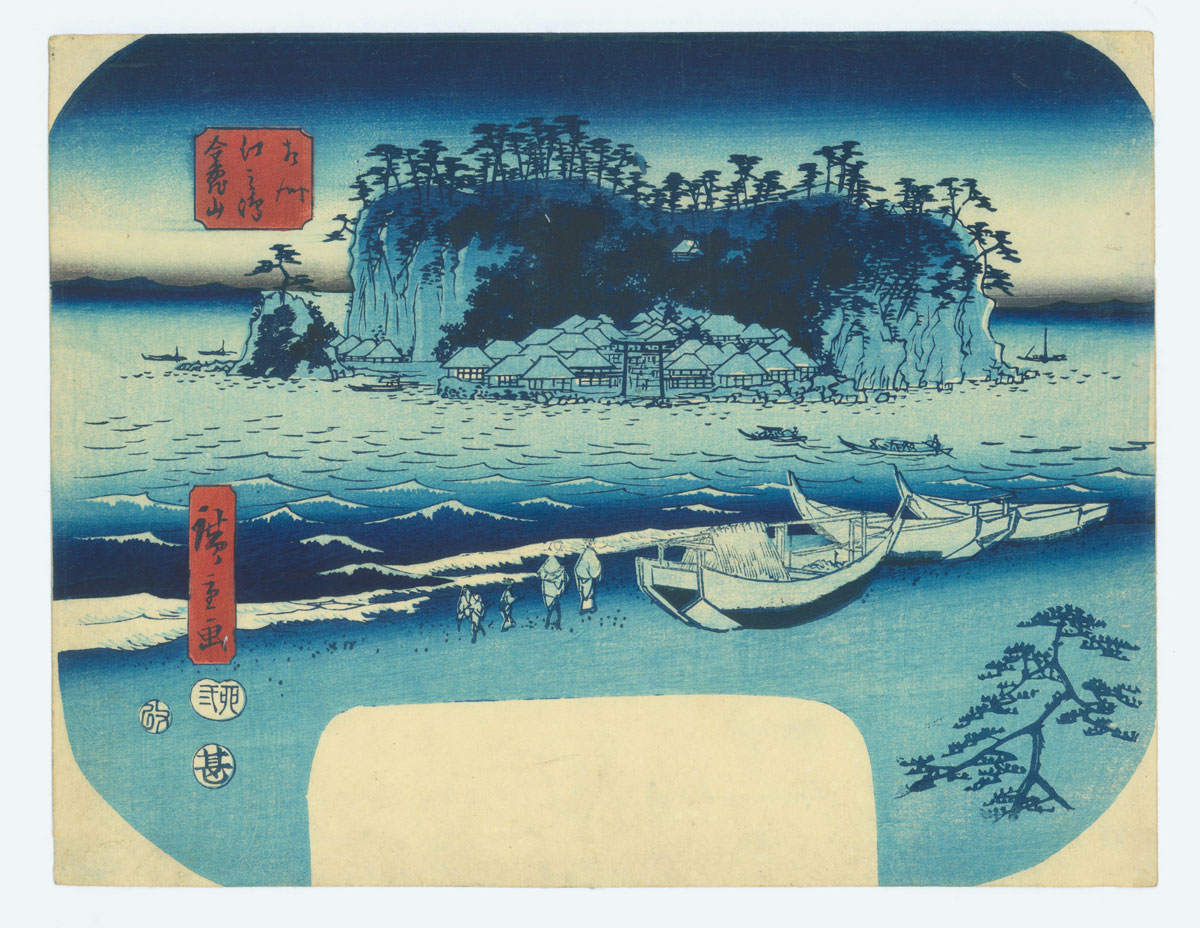
Utagawa Hiroshige (1797−1858), Kinkizan on Enoshima Island in Sagami Province (Sōshū Enoshima Kinkizan), Color woodblock print: aiban yoko-e uchiwa-e, 8⅞ x 11½ in. (22.5 x 29.2 cm), courtesy of Sebastian Izzard LLC Asian Art
Ancient and/or Contemporary Japanese Art
The Art of Japan showcases Hiroshige’s woodblock print, #109 Minami, Shinagawa, Samezu Coast (1857), an excellent example of the artist’s masterful use of the blue dyes/pigments from his most well-known series of prints from the 100 Views of Edo.
Dai Ichi Arts, Ltd. features a stoneware incense burner by Shimizu Uichi, the Living National Treasure. This historical lineage of celadon ware is referenced in this piece, where Shimizu’s transparent glaze takes on an icy, blue-white color. While this textured glaze, which showcases small cracks on a jade-like veneer, references rare Guan pottery, the three-footed silhouette of the object highlights a mountain-scape at its summit.
Egenolf Gallery Japanese Prints is presenting Evening Snow, Edo River (Blue Version), a first edition Japanese woodblock print by Kawase Hasui (1883-1957).
Hara Shobo is showing Mother and child looking at Goldfish candies (Kinkato) on a blue and white dish, from the series Fashionable striped fabrics made to order (Atsurae some tosei shima), a Japanese polychrome woodcut print by Utagawa Toyokuni III, circa.1844.
Kinkizan on Enoshima Island in Sagami Province (Sōshū Enoshima Kinkizan), by Utawaga Hiroshige at Sebastian Izzard LLC, emanates from an untitled series of fan prints depicting famous landscapes in and around Sagami Province.
Joan B Mirviss LTD, is showing a bold and inventive vessel by the Living National Treasure, Matsui Kōsei (1927-2003), who was the seminal figure in the revival of neriage (marbleized clay). This signature, blue and white gradated, brush-rubbed, marbleized globular stoneware vessel dates to the artist's middle period, circa 1982. While a priest at Gessō-ji Temple in Kasama, Japan, Matsui studied ancient Chinese ceramics to perfect his neriage technique but his original, abstract works with geometric surface patterns far surpassed these historic precedents.
At her eponymous gallery MIYAKO YOSHINAGA, presents Yojiro Imasaka’s, Blue Bayou 9, a hypnotic interpretation of this mysterious Louisiana landscape, creating an illusion of natural beauty in just two colors, their nuanced tonality reminiscent of solemn blue-and-white porcelain.
Sonsu, the blue and white Ohi ceremonial vessel at Onishi Gallery, by Ohi Toshio Chozaemon XI, exemplifies his personal perspective and understanding of his family’s 300-year-old heritage, and applies a contemporary twist to the signature amber color of Ohi ceramics. By incorporating the color of blue and white, Ohi is developing a new family tradition.
In this impression of Niagara Falls, available at Scholten Japanese Art, Hiroshi Yoshida contrasts layers of light and dark blue swirls of water in the foreground against the soft pink mist drifting upwards towards tufts of pale cotton candy pink and lavender clouds. In 1924, he was involved with a traveling exhibition of paintings and prints in America which was organized to support those artists who were struggling in the aftermath of the Great Kanto Earthquake that devastated Tokyo on September 1st in the previous year. Upon his return to Japan in January of 1925, Yoshida established his own printing studio and began production of woodblock prints, starting with a series based on compositions from the United States.
TAI Modern is showing Breaking Composition #14, kiln-foaming cast glass, by Kojiro Yoshiaki, whose works are created by the complex interaction of glass, tiny bubbles, heat, and gravity. The artist concludes that this transformation echoes the life cycle in the natural world where objects are always changing, and his goal is to create forms that express the natural properties of glass.
A beautiful 18th century fan painting with flowers, mounted as a hanging scroll, is available at Thomsen Gallery. With rich mineral colors, ink and gofun on gold paper, it depicts a group of colorful blossoms in bloom. Flowering in the late spring and early summer, the Clematis became a symbol of the summer and a perfect image to place on a fan, so that its owner could start fanning him or herself at the first arrival of hot days.
An 18th century Korean blue and white porcelain Dragon jar, with an underglaze cobalt-blue design from the Yi Dynasty is the selection at Hiroshi Yanagi Oriental Art.
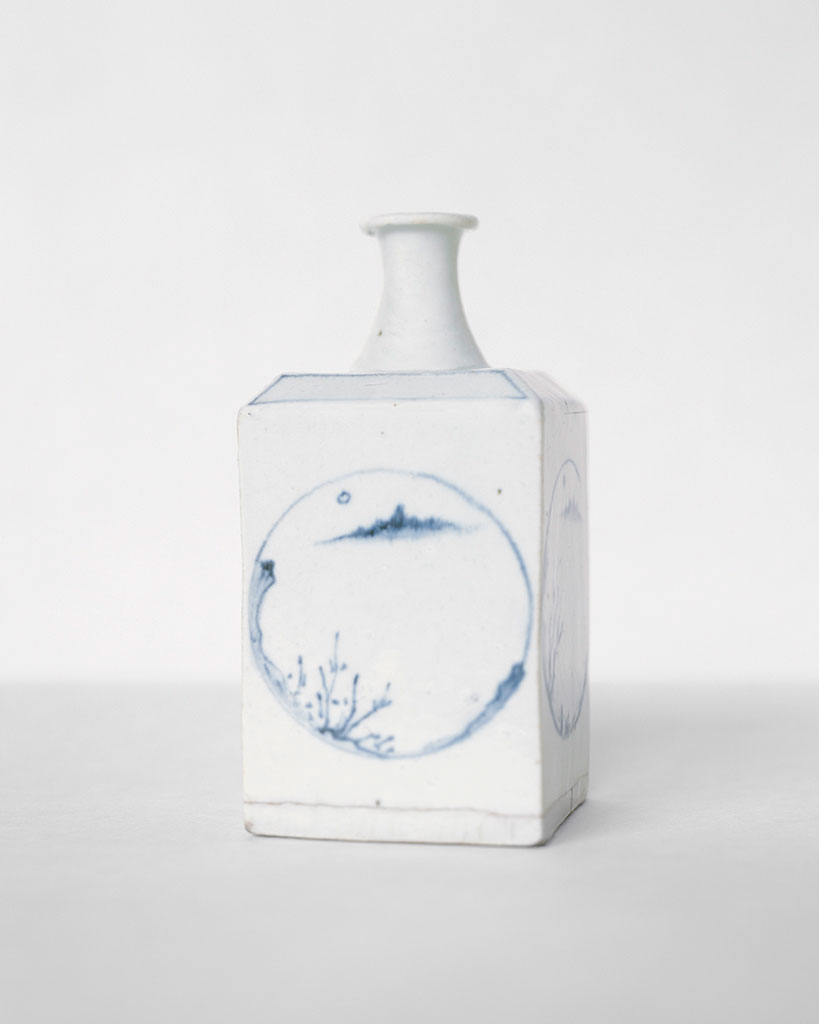
Bohnchang Koo (B. 1953), OSK 39, 2005, Archival pigment print, 19.6 x 15.7in. (50 x 40cm.), courtesy of HK Art & Antiques LLC
Ancient and Contemporary Korean Art
OSK 39, an archival pigment print, by Bohnchang Koo is presented by HK Art & Antiques LLC.
